7 Different Types of Fade Haircut
So:
The origin of the fade is not clear-cut. However, it can be traced to the U.S. military’s strict hair grooming standards in the ‘40s and ‘50s. It’s no wonder since the sharp angles, and harsh lines of fade haircuts exude a no-nonsense vibe.
What is a Fade?
Get this:
A fade is characterized by a blended transition from short and sparse to longer and dense hair lengths at the side and back of the head. The hair is cut to mimic a gradient that “fades” before it reaches the natural hairline.
Now:
The style has become a staple addition to pretty much every men’s hairstyle. That’s mostly because it is versatile and can be tailored to suit anyone.
Different Types of Fades in 2025
1. High Fade
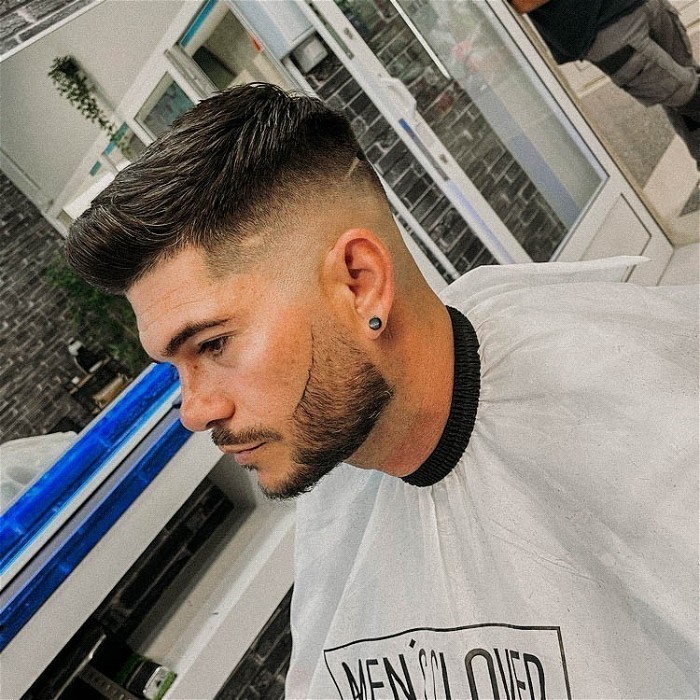
Of all the different types of fades, this is the one that exposes much of the scalp. Usually, the fade begins towards the top of the skull at pretty much the same level as the forehead.
That’s right above the temple. You’ll notice that the transition from bald (in the case of a high skin fade) or short hair to long hair on top is drastic. The lack of hair on the sides creates an elongating and slimming effect.


Styling Tips:
- Use a gel or pomade (straight hair) to style the hair on top for a neat look.
- Spritz some water before detangling coily hair with a fro pick.
- Apply sunscreen to the exposed scalp to prevent sunburn.
2. Mid Fade

Also known as medium fade, the mid fade is the perfect balance between the dramatic high fade and the subtle low fade. The tapering starts above the eyebrow level and gradually fades before it gets to the natural hairline around the neck and ears.
If you observe closely, you’ll notice that the drop fade and burst fade are just variations of the mid fade. Altogether, there is a softer transition from the dense hair area to the skin or short and sparse hair area.
Like the high fade, the medium fade also elongates the head. However, it is more subtle as it adds volume to the crown area and provides balance for face shapes lacking width there.


Styling Tips:
- Pair your haircut with a nicely shaped beard to elevate your style.
- If you must rock this style on a square-shaped face, cut the hair on the sides very short.
- Use gel or pomade to slick back the hair on top for suit-and-tie occasions.
PRO TIP: Check out our article on how to ask for a fade haircut according to our barber Sunny.
3. Low Fade
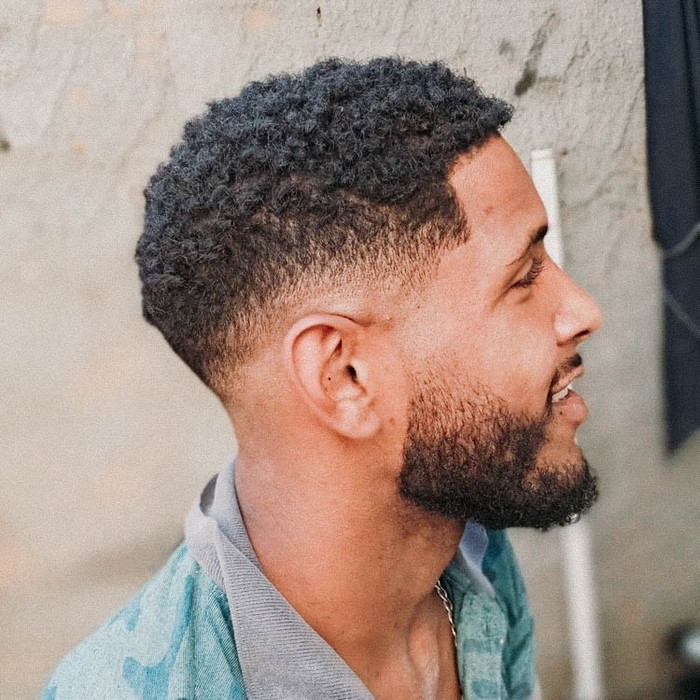
The low fade is as subtle as it gets, even when paired with a skin fade. Its purpose is to give a soft feel of layering with a slight edge. Typically, the tapering begins about an inch above the ears and close to the neckline.
Like the high fade, the low fade doesn’t give much room for a slow transition from short to long hair. As a result of this, an obvious slimming effect is noticed in the faded area. That’s why it’s great for face shapes with slimmer foreheads.


Styling Tips:
- Pair it with significantly longer hair on top for the best outcome.
- If you have curly or afro-textured hair, define your curls/coil with a styling product.
- Do an outline to make the low fade pop.
4. Temple Fade
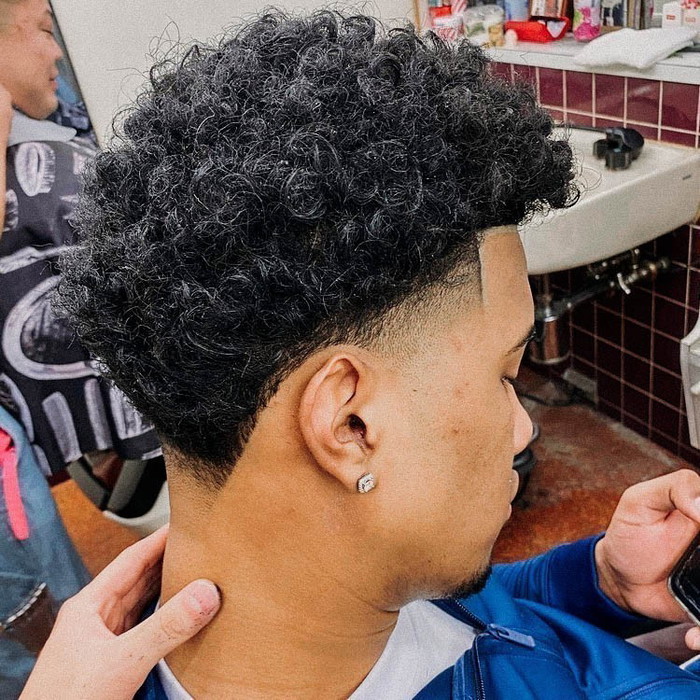
As the name suggests, this type of fade is restricted to the temple area and sideburns. The Temple Fade is also known as a Brooklyn Fade or Temp Fade. It blurs out the natural hairline around the temple and makes it appear better than the way it looks naturally.
Usually, barbers do a temple fade for a neater transition from the hair to the beard. It’s one of the ways to transform a haircut from basic to dope. On fuller afro-textured hair, doing a temp fade helps cut down some weight on the sides of the face.


Styling Tips:
- Looks very good when paired with a beard.
- Don’t forget to do a line-up for a sleek look.
- Touch up at least once a week for a clean look.
5. Burst Fade
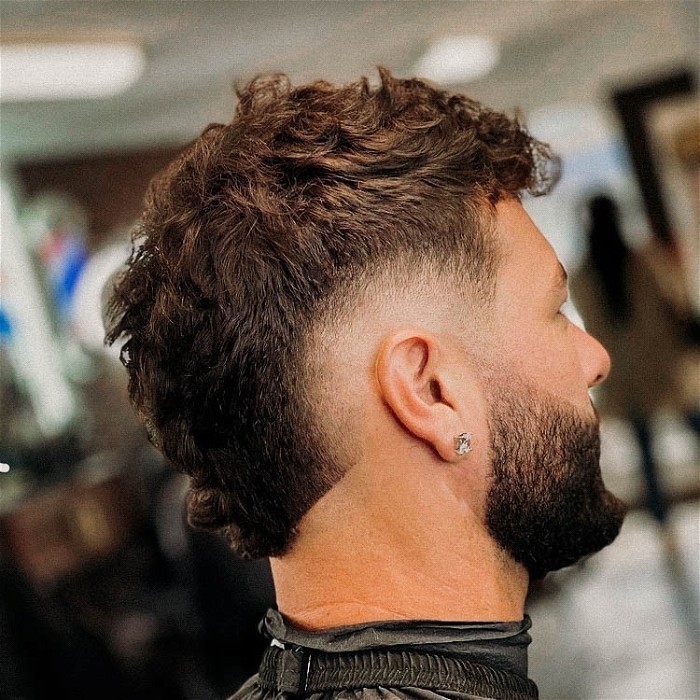
The Burst Fade gives the impression of bursting out of a skin fade right before the natural hairline around the ear. It is then tapered into a dense hair area inches around it. Try picturing a semi-circle of some sort with the ear as the center. This type of fade follows the natural curve of the ear.
It’s mostly coupled with a skin fade to highlight the transition and curve. A good way to slim up the sides of the head, this fade is great on wide face shapes.


Styling Tips:
- It looks pretty good with a nicely trimmed beard.
- You could throw some color into the mix to spice things up.
- Make sure to style the hair around the faded area neatly.
6. Skin Fade

In case you didn't know, all fades are tapers, but not all tapers are fades. The skin fade is the exact reason why all tapers are not fades.
A Taper is a haircut technique that progressively reduces the length and thickness of hair in a particular direction. Essentially, that’s what happens with all fades. Hence, fades are very short tapers that come closer to the scalp.
However, tapers traditionally do not come down to the skin. That’s where they differ from skin fades. The Skin Fade gradually reduces hair towards one direction until it “fades” into the scalp. That’s why it is also called a bald fade.
The Skin Fade features in every fade hairstyle that transitions from dense hair to bare scalp.


Styling Tips:
- Apply sunscreen to the exposed areas of your scalp to combat potential sunburn.
- You could get a trimmer to ensure that you maintain the bald fade.
- Always get a line-up. It just makes the fade look even better.
7. Drop Fade
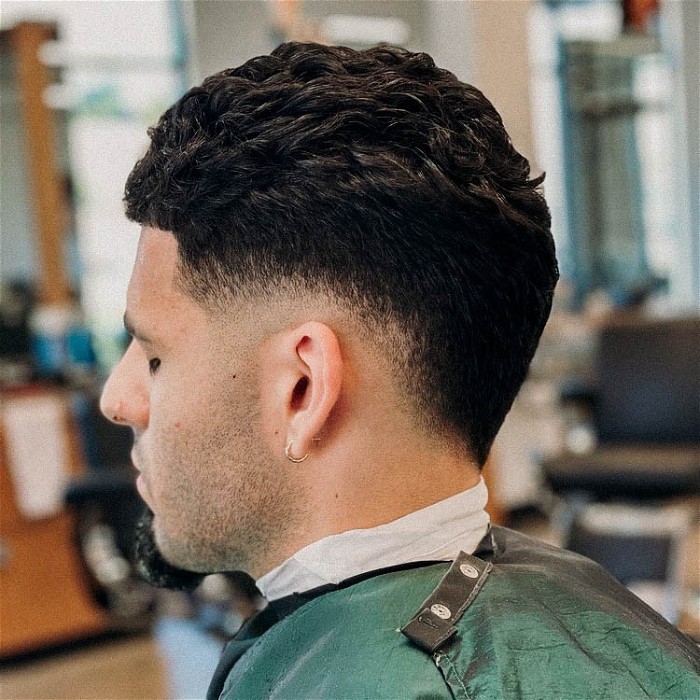
You could think of this type of fade as a mid or low fade, and you wouldn’t be completely incorrect. That's because a drop fade can be both since the distinction between a mid and low fade is the point where tapering begins.
What truly sets the drop fade apart from every other type of fade is the way the tapering seems to start out straight from the temple area. However, it then proceeds to take a dive as it passes behind the ears.
This style allows you to maintain length on top and trim the sides in a nice curve. Low maintenance and versatile, the drop fade is a modern twist to the classic fade.


Styling Tips:
- For an extra formal setting, slicking back the longer hair on top will make you look classy and elegant.
- You can pull off a quiff or pompadour using your preferred styling product.
- This style looks way better with a tapered beard.
8. Shadow Fade
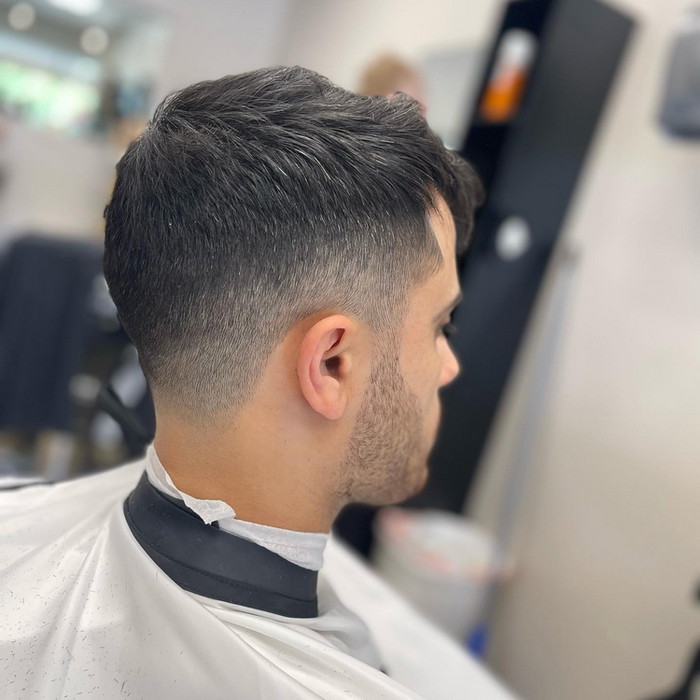
Usually confused with the skin fade, the difference between the shadow fade and the skin fade is the shortest hair length in the taper. While the skin fade is shaved down to the skin, the shadow fade leaves a bit of stubble to create the “shadow.”
With the shadow fade, the fade does not blur out your natural hairline. Instead, it outlines when coupled with a clean shape-up.


Styling Tips:
- Keep the sides very short to reveal the beauty of this style.
- Blend your hair into your beard with a temple fade for heightened style.
- Make sure to keep your hair moisturized all around.
Conclusion
So:
We’ve gone through the different types of fades, and you must have noticed that a hairstyle can be a combination of a few of them. Also, fades allow for some creative range when it comes to styling.
Well, don’t you just love them?
Finally:
Please feel free to ask questions and tell us what you know about fades in the comment section below.
Frequently Asked Questions
More from Mike Medders
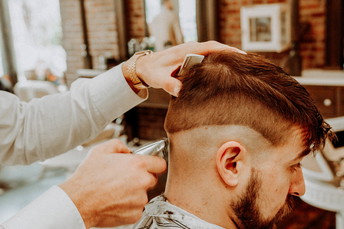
How to Talk to Barbers Like a Pro: Insights from Expert Barbers

Trust me, I've been on both sides of the chair. I can't count the number of times a client has sat down and struggled…
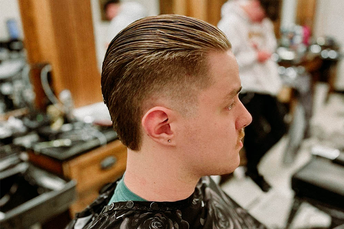
Slick Back Haircut

Barber Spotlight: Slick Back Haircut Transformation by Nat The slick back haircut is a timeless classic, combining…


Comments